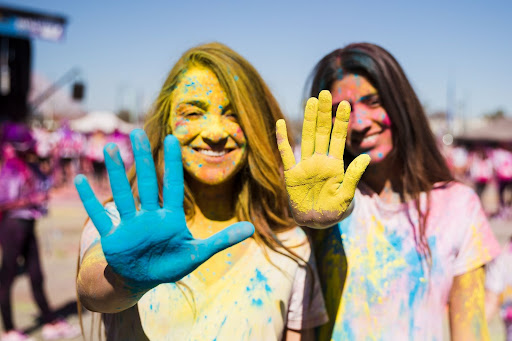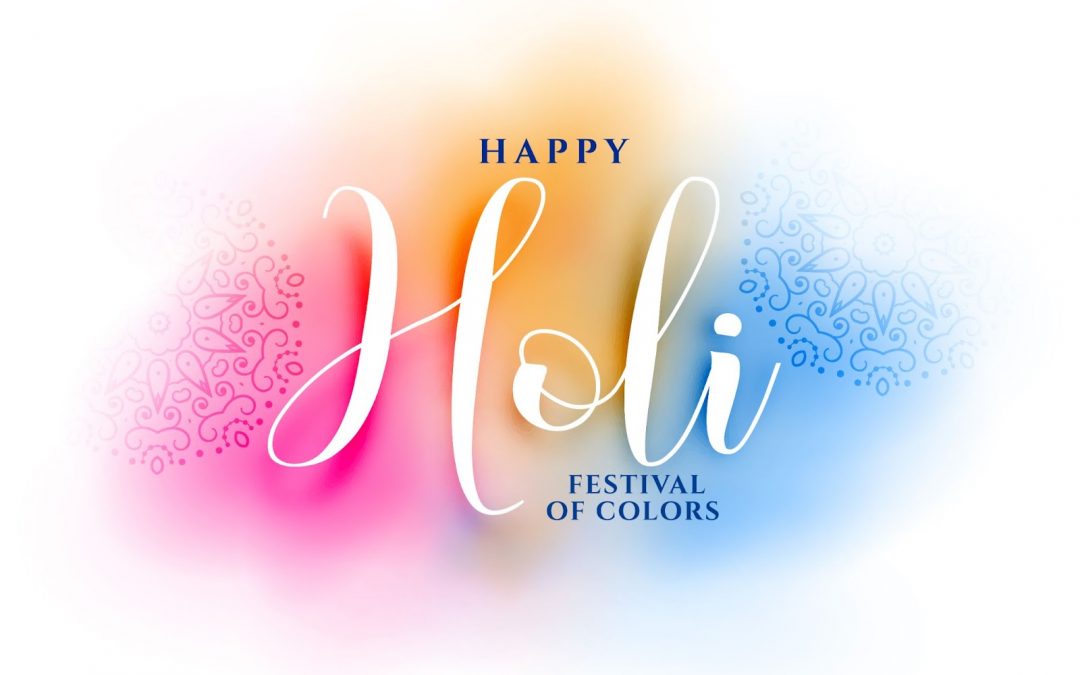What is Holi and what are the myths behind its celebration?
Holi is the festival of colors in Nepal celebrated in “Fagu Purnima”- the full moon day. The festival is widely celebrated in Terai but now is popular in most parts of the country. Also referred to as the “Festival of Colors” or the “Festival of Love” by people around the nation is a public holiday. It honors Radha and Krishna’s divine love and demonstrates the triumph of good over evil. It is a two day festival where the earlier day is celebrated in Kathmandu valley and people of hilly region and the other day is celebrated by people in Terai.
During this festival, people exchange different smear color powders with their friends and family members while exchanging greetings, harmony, happiness, and wishing them “Happy Holi”.

The color powders used in the festivals have their own meaning as yellow here is believed as Lord Bishnu & Lord Krisna’s favorite color, blue as a symbol of war, red as the symbol of power and good fortune whereas Lord Ganesh loved all the colors. Out of many tales of history, Holi consists of one of them.In recent years, the celebration of love, color, and recreation known as Holi has expanded to various regions of North America and Europe.
History
The Hindu custom in India, it is centered on the demonic siblings Holika and Hiranyakashipu. When the devil monarch Hiranyakashipu planned to murder his own son Prahlad with the aid of his sister Holika, it became a festival. Holika was granted a holy boon that allowed her to withstand the flames. She carried Prahlad on her knees into the blazing fire. In contrast to Holika, who was burned to ashes in the mishap, Prahlad, a true devotee of Lord Vishnu was saved from the accident.
Hence, many people believe the festival was named after Holika. In short, it is the celebration of the triumph of good over evil.
Why is Terai Holi celebrated the day after the Hilly Region?
The day after the hilly region’s Holi celebration, known as “Holika Dahan,” people in the terai honor justice by gathering wood and building bonfires to represent Holika’s death. On the day of Fagu Purnima, the full moon day, “Holika Dahan” refers to flaming fire after sundown, symbolizing the death of the fire immortal Holika, who was unaware that she wouldn’t have gotten burned if she had crossed the flame on her own.

Holi is observed on the exact day of Fagu Purnima in Nepal’s hilly region. The placement of “Chir- a long bamboo stick wrapped with various colors of cloth” in Kathmandu durbar square marks the official start of the celebration. which, the day before the ceremony, formally welcomes it by incinerating it. While the Terai people find this Holi celebration tradition to be quite unique and contemporary. However, the festival’s real depth and essence, as well as its originality, can only be seen in Terai.
In addition to the myths and the colors, the locals relish the season of spring blooming everywhere as they bid farewell to winter . They consider it to be a blessing from the god for their forthcoming harvest and land fertility in addition to its cultural importance. On this day the plains of Nepal are filled with the echoes of “HAPPY HOLI”.
 Finland
Finland Bangladesh
Bangladesh
